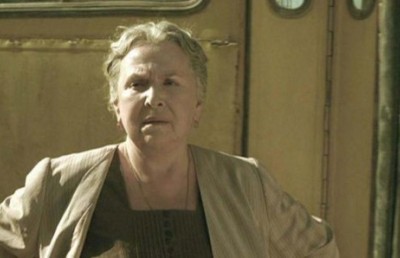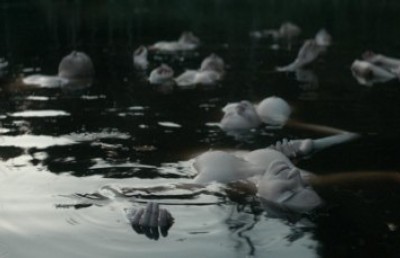Out of the infinite Meadows: Peter Baumann’s Machines of Desire
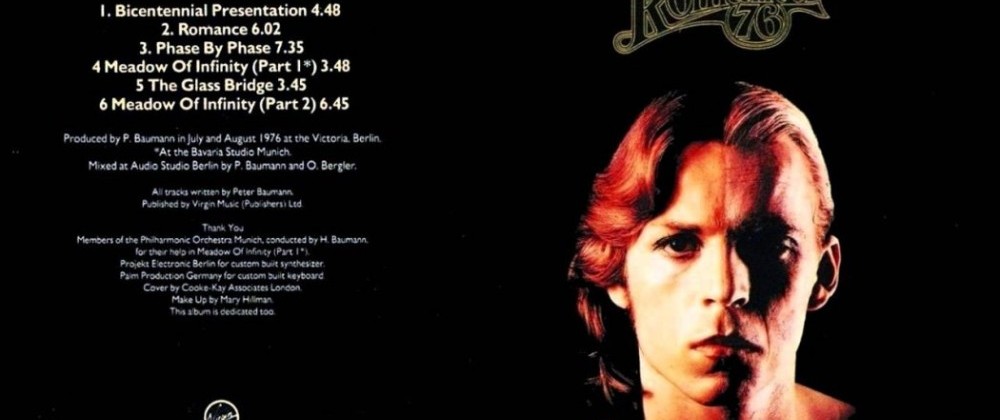
When we speak of film soundtracks, we usually refer to sound and/or music married to a set of pre-conceived images that are projected on a screen (sadly today all too often viewed on a laptop); but what of music that conjures images in one’s mind? This music would also qualify as a soundtrack, but to an undefined but ultimately shared experience which would be distinct for each person experiencing it. Peter Baumann’s long overdue release, Machines of Desire (Bureau-B, 2016), falls into this category of what I’ll refer to as “soundtrack of the mind.”
Peter Baumann was a member of German electronic group Tangerine Dream during its most experimental phase (1971 to 1977) where most of their music was created via improvisation. Alongside him were Edgar Froese (founding member) and Christoph Franke. Most of the sounds were generated by a vast array of synthesizers and sequencers plus the unmistakable grounding of Froese’s superb and loud guitar. The traditional “rock” element of the guitar (albeit put through a whole lot of effects boxes) kept the band firmly within the progressive rock movement which was at its height during this period.
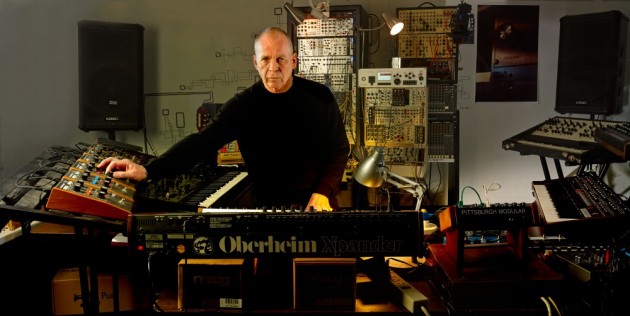
Baumann in studio. Image taken from Bureau-B website.
The Prog tag unfortunately limits the scope of creativity evident in the works they produced in those days; perhaps that’s why they attempted to anchor their music to films circa 1975-76 when approached by American film director William Friedkin (The Exorcist, 1973) for his upcoming adaptation of Georges Arnaud’s The Wages of Fear novel (1950), already adapted to the big screen by Henri-Georges Clouzot in 1953 as The Wages of Fear . The resulting film, Sorcerer (1977), was a huge disappointment at the box-office (with Universal and Paramount, who had financed the project, quite upset about it). The soundtrack for Sorcerer provided by Tangerine Dream was a perfect match to what Friedkin had in mind; improvised electronic soundscapes that lift the viewer out of a normal comfort zone, exaggerating the fear and unease of what the characters are doing on-screen. The four main characters, played by Roy Scheider, Bruno Cremer, Francisco Rabal, and Amidou, have to transport nitroglycerine over a treacherous landscape in order to reach and extinguish an oil rig fire just outside a rain forest in South America. The methods they will have to devise to get the materials will themselves be improvised in order to reach that location safely, without blowing themselves up along with their explosive cargo; practically a suicide mission. The idea of “improvisation” therefore looms large over this film, and the associated Tangerine Dream score is perfect to fit Friedkin’s conception of the film.
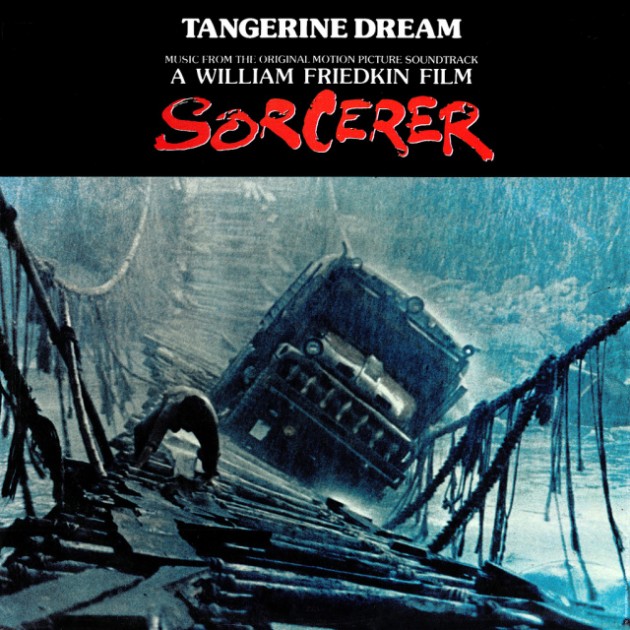
The idea of such music being a window into one’s mind is also appropriate here; one can only imagine what Friedkin felt (or even imagined) when receiving a recording on tape from Tangerine Dream while in the middle of a rain forest; Tangerine Dream had not seen any footage at that point in the project, their musical contribution provided by their own impressions after reading the script. On the one hand, you have Friedkin shooting the film in a distant location imagining what the music will be, and conversely Tangerine Dream ensconced in a distant studio performing the music imagining the pictures conjured up in their minds from the written material provided to them by the director; a perfect alliance of improvisatory approaches to two kinds of medium that will complement one another on the screen.
Peter Baumann was a member of Tangerine Dream at the time, but soon left to pursue a solo career as composer and producer for other artists as well. His first release Romance ’76 was released by Virgin records while still a member of Tangerine Dream. It contained six tracks of instrumental music which highlights what his role must have been within the Tangerine Dream trio; an accent on percussion and melody on the first side of the album, but a more experimental side overshadows side two which culminates in what can only be termed a masterpiece of composing and improvising and then producing the resultant material into a cohesive whole. The piece in question, “Meadow of Infinity” is a two-part song with a bridge piece entitled “The Glass Bridge” which runs all together for fourteen and a half minutes. It starts with a very sombre orchestral opening accompanied by a voice choir; percussion is added as the piece progresses to an expansive auditory climax which adds massive organs and mellotron at that moment of release, then a brief silence. Very slowly emerging out of this silence, soft electronically generated percussive pads begin to emerge, and from then to the end, all music is generated with keyboards and various sequencers. The marriage of electronic and real instruments is actually quite short, but it feels that both are present for the whole piece so strong is the execution of the material. “Meadow of Infinity” definitely stands alone on that album in terms of inducing the effect of transporting the listener to another level of experience; it is what I would consider to be the most successful piece of music to do this; an example of music half-composed and dormant, until given life by the active part of listening.
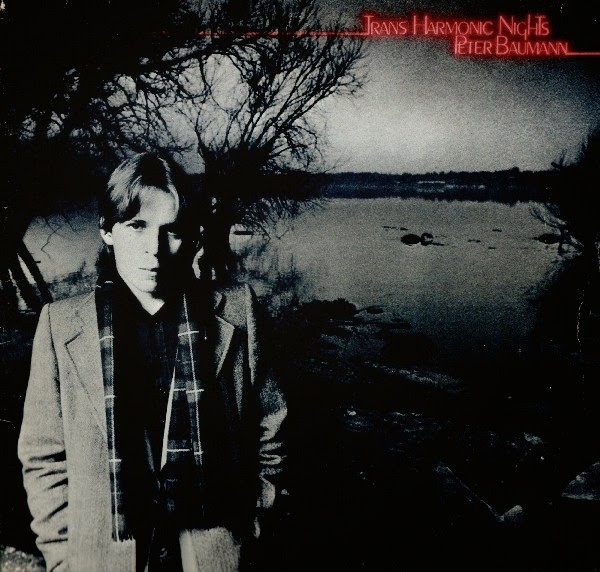
Trans-Harmonic Nights followed in 1979; again released by Virgin Records, who were themselves turning their attentions towards the more aggressive Punk idiom. The album contains eight little electronic vignettes (almost a mind/musical travelogue) that betray the visual themes perhaps a little too much this time around; titles such as “Biking up the Strand” and “Meridian Moorland” as examples. The music was a slight departure from what Baumann had done previously; he was trying to move into another direction –perhaps more pop orientated– than before with the shorter pieces.
Repeat Repeat (1981) was co-produced this time around with Robert Palmer (a famous English pop singer who would go mega with a collaborative band called The Power Station). This is perhaps the album which severed all links with the Tangerine Dream fans, and which is unjustly reviled by most of them. The music itself is of a high caliber and emphasizes what must have been a great percussive arranger within the Tangerine Dream trio. There are ten compositions, none over the four minute mark and……vocals; clearly aimed at the burgeoning Human League/Heaven 17 dance music fans perhaps. The music itself though is Baumann’s as it is possible to hear echoes of his previous two releases scattered throughout these works.
I think the three Virgin albums seem to show a morphing of an artist sensitive to the changing times and musical landscapes which surrounded him. The album art on the covers demonstrate this progression as well, as he chose to step into the light and adorn each of the covers with an image of himself; Romance ’76 saw him split in two personalities, on one side a regular part of his face and long hair and on the other side, a made up white face with slicked back hair echoing perhaps a human machine. Contrary to the austere covers which adorned the Tangerine Dream albums, Baumann chose to enhance his covers with his own personality.
Long years of musical silence followed with possible and mythic collaborations mentioned, but none appearing on the musical market. What Peter Baumann devoted himself seems to have come to fruition in 2009 by the founding of The Baumann Foundation; to quote Wiki’s page on Baumann: ”a think-tank that explores the experience of being human in the context of cognitive science, evolutionary theory and philosophy.” A few of his lectures (interesting ones at that) concerning man’s place on the planet and his growth within its systems are available to watch on Youtube.
Come early 2015, Baumann re-connects with his old Tangerine Dream partner, Edgar Froese, for a possible musical project. “In November I called Edgar Froese and we met in early January 2015 in Austria. It was an extraordinary encounter and it seemed like it would lead to a renewed collaboration after several decades” (Bureau-B site). Then Froese passes away on January 20th at age 70; Baumann does not discount the possibility of carrying on with current members of Tangerine Dream, but this does not come to fruition either.
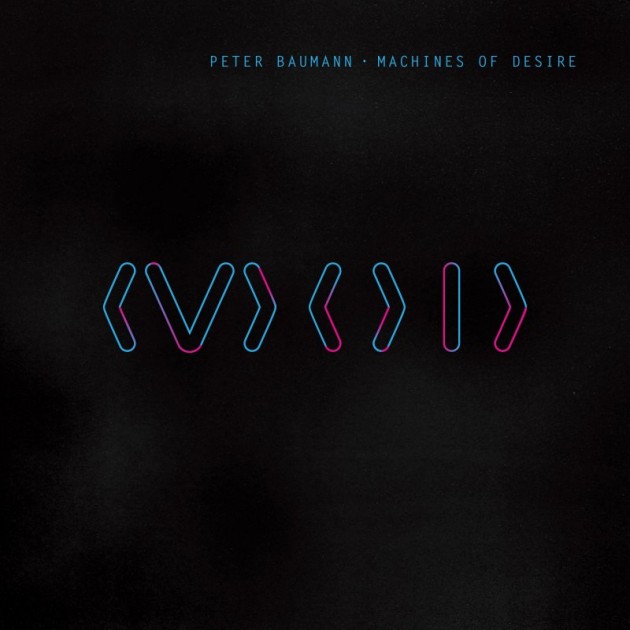
Then came an announcement that Peter Baumann is set to release a new work entitled Machines of Desire on the great German label Bureau-B, which specializes in re-releasing key works from various electronic and other bands that were active in the mid-seventies such as Cluster/Moebius/Roedelius etc., and contemporary electronic artists as well.
The music contained on Machines of Desire definitely brings us to an inner mental cinema indeed as it conjures up a myriad of images that would be not be out of place in a dark, neo-noir thriller reminiscent of a Rainer Werner Fassbinder film. The album opens with “The Blue Dream”, a track very reminiscent of the Sorcerer (1977) soundtrack, but mixing in some odd medieval style rhythms and a Mellotron vocal choir that would go well with Werner Herzog’s Nosferatu (1979), scored by fellow German avant-garde electronic band Popol Vuh; it also references Baumann’s own “Dance at Dawn” form of his Trans-Harmonic Nights album.
“Searching in Vain” is the following track; it mixes a metronomic synth beat which is coupled to a heartbeat melding together on which a glock style melody develops. From behind the mix comes a very quick minimalist sequence which speeds up the momentum of the piece. There is a minimal circularity to this composition which is relentless in its grip on the listener.
The following track, “Valley of the Gods”, presents a very clear look back at Baumann’s earlier work with Tangerine Dream in terms of the sequences and the tonalities employed throughout the piece.
“Echoes in the Cave” has a very brooding and strange beginning with a low bass percussive beat with synthesized water drops echoing around the “cave”. Then an electronic piano carries melody with a mono-synth line on top which is unsettling to say the least.
“Ordinary Wonder” opens with Mellotron samples with a rhythm drum machine riding over them setting the tone. Then Baumann plays a melody that could have been lifted from Trans-Harmonic Nights. It’s a beautiful soft melancholic piece that he’s always been very good at conceiving right from his earliest Tangerine Dream days.
“Crossing the Abyss” carries almost a militaristic (albeit alien to our world) type of cadence with synth line soloing over the top of the rhythm beds. There are echoes of Meadows of Infinity on this track at various passages; the percussive sound samples in particular. There is a call/answer conversation between two distinct keyboard parts which has a vocal sample repeating “thirty-one” over it as distant Mellotron choirs herald the return of the opening melody.
The penultimate track, “Dancing in the Dark”, has nothing to do with a Bruce Springsteen cover; the echo piano returns with another plaintive melody over a sequence that can only come from Peter Baumann. The beauty of it lies in its simplicity of execution yet such music has not been heard since 1979 even by current “Berlin School” retro-bands.
The final track on the album, “Dust to Dust”, starts with a steady low beat which then has a steady sequence on top. Choir samples sing an ode until a treated Mellotron brings up a beautiful rising chord sequence. The piece moves forward ever more quickly as synth sequencers begin trying to coalesce a melody. Then the piece moves into overdrive with Baumann playing lead synth lines on top of the melody. The piece slows down to the opening choir melody with the steady percussion in the foreground which is the last sounds heard until it abruptly stops….like a heartbeat; is this an elegy for Froese? It is not stated but definitely implied.
This album is only the beginning of other forthcoming works that Mr. Baumann plans on releasing on the Bureau-B label. It is a short album to be sure, but like his previous Virgin releases which also clocked in at below the forty minute mark, it is focused and streamlined: a perfect structure for his ideas to shine. One is not likely to hear a more interesting re-emergence of an artist such as Baumann who has managed to incorporate his philosophical concerns in a purely instrumental style into his vast musical legacy from years ago. He is looking back, but by doing this…he is looking forward through to infinite meadows which lie in our collective consciousness.
PS: All the tracks discussed above can be listened to on Youtube, but please if you do purchase the records afterwards!




